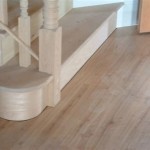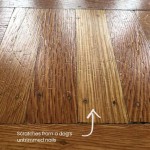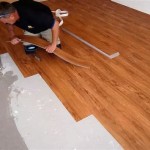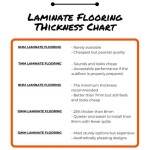Outdoor Interlocking Flooring: A Comprehensive Guide
Outdoor interlocking flooring presents a versatile and increasingly popular solution for various exterior spaces. Its modular design allows for easy installation and customization, offering a practical alternative to traditional paving methods. This article provides a comprehensive overview of outdoor interlocking flooring, covering its types, benefits, installation process, maintenance, and potential applications.
The core concept behind interlocking flooring lies in its individual tiles or panels that connect to each other, forming a cohesive surface without the need for adhesives or specialized tools. This system allows for quick assembly and disassembly, making it ideal for both temporary and permanent installations. The materials used in outdoor interlocking flooring are specifically designed to withstand the elements, ensuring durability and longevity.
Types of Outdoor Interlocking Flooring
The market offers a diverse range of outdoor interlocking flooring options, each with unique characteristics and suitability for different applications. The choice of material largely depends on factors such as intended use, aesthetic preferences, and budget considerations.
Plastic Interlocking Tiles: These tiles are commonly made from polypropylene (PP) or polyethylene (PE) plastics. PP tiles are known for their high impact resistance and ability to withstand heavy loads, making them suitable for patios, decks, and even temporary parking areas. PE tiles, while slightly less rigid, often offer better flexibility and are a good choice for areas prone to temperature fluctuations. Plastic tiles are typically UV-resistant to prevent fading and degradation from sunlight exposure. They are also resistant to water, mold, and mildew, contributing to their low-maintenance nature.
Rubber Interlocking Tiles: Commonly manufactured from recycled rubber, these tiles offer excellent shock absorption and slip resistance. They are an ideal choice for playgrounds, gyms, and areas around swimming pools where safety is a primary concern. Rubber tiles are also highly durable and can withstand significant wear and tear. Their porous nature allows for good drainage, preventing water accumulation and reducing the risk of slips and falls. The resilience of rubber also makes it comfortable underfoot. However, rubber tiles may require more frequent cleaning to prevent the buildup of dirt and debris.
Wood Interlocking Tiles: These tiles provide a natural and aesthetically pleasing appearance. They are typically made from hardwoods like teak, cedar, or redwood, known for their resistance to decay and insect infestation. Wood tiles offer a warm and inviting feel, making them a popular choice for decks, balconies, and garden pathways. They are often treated with preservatives to enhance their weather resistance and prolong their lifespan. Regular maintenance, such as cleaning and oiling, is essential to preserve the appearance and integrity of wood interlocking tiles.
Composite Interlocking Tiles: Combining the benefits of wood and plastic, composite tiles offer a durable and low-maintenance alternative to natural wood. They are made from a mixture of wood fibers and recycled plastic, creating a material that is resistant to rot, decay, and insect damage. Composite tiles offer a similar aesthetic to wood but require less maintenance, as they do not need to be stained or sealed. They are also resistant to fading and scratching, making them a long-lasting option for outdoor spaces.
Stone Interlocking Tiles: These tiles provide a premium look and feel for outdoor areas. They are made from natural stone materials such as slate, granite, or travertine, offering a unique and elegant appearance. Stone tiles are highly durable and can withstand harsh weather conditions. They are also resistant to staining and fading. However, stone tiles can be more expensive than other options and may require professional installation due to their weight and complexity.
Benefits of Utilizing Interlocking Flooring Outdoors
Outdoor interlocking flooring offers several advantages over traditional paving methods, contributing to its increasing popularity among homeowners and commercial property owners.
Ease of Installation: The primary benefit of interlocking flooring is its simple and straightforward installation process. The modular design allows for quick assembly and disassembly without the need for specialized tools or adhesives. Most interlocking tiles feature a locking mechanism that securely connects the tiles together, creating a stable and uniform surface. This ease of installation makes it a popular choice for DIY projects and allows for significant cost savings compared to hiring professional installers. The ability to easily remove and reinstall the tiles also makes it convenient for cleaning, repairs, or relocation.
Customization and Design Flexibility: Interlocking flooring offers a high degree of customization and design flexibility. The tiles are available in a wide range of colors, patterns, and textures, allowing for the creation of unique and personalized outdoor spaces. Different tile types can be combined to create borders, patterns, or distinct zones within an area. The modular design also allows for easy modification and rearrangement as needed. This flexibility makes it suitable for adapting to changing needs or preferences over time.
Durability and Weather Resistance: Outdoor interlocking flooring is designed to withstand the elements and provide a durable surface for various activities. The materials used are typically resistant to water, UV radiation, and temperature fluctuations. This resistance ensures that the flooring will maintain its appearance and structural integrity over time. Properly installed and maintained interlocking flooring can withstand heavy foot traffic, furniture, and even vehicle traffic in some cases. The durability and weather resistance of interlocking flooring contribute to its long-term value and reduced maintenance costs.
Enhanced Safety: Certain types of interlocking flooring, such as rubber tiles, offer enhanced safety features that are particularly beneficial in areas prone to slips and falls. Rubber tiles provide excellent shock absorption and slip resistance, reducing the risk of injuries. The porous nature of some tiles also allows for good drainage, preventing water accumulation and minimizing the risk of slipping. These safety features make interlocking flooring a popular choice for playgrounds, swimming pool areas, and other outdoor spaces where safety is a primary concern. The smooth and even surface of interlocking flooring also reduces the risk of tripping hazards.
Low Maintenance: Compared to traditional paving methods, outdoor interlocking flooring typically requires less maintenance. The materials used are often resistant to staining, fading, and mildew growth. Regular cleaning with soap and water is usually sufficient to maintain the appearance of the flooring. Some types of interlocking flooring, such as wood tiles, may require periodic sealing or staining to protect them from the elements. However, overall, the maintenance requirements for interlocking flooring are relatively low, contributing to its convenience and cost-effectiveness.
Installation and Maintenance Considerations
Proper installation and maintenance are crucial for maximizing the lifespan and performance of outdoor interlocking flooring. Following the manufacturer's instructions and implementing a regular maintenance routine will ensure that the flooring remains in good condition for years to come.
Site Preparation: Before installing interlocking flooring, it is essential to prepare the site properly. This typically involves clearing the area of debris, leveling the ground, and ensuring proper drainage. A stable and level base is crucial for preventing unevenness and movement of the tiles. In some cases, a layer of compacted gravel or sand may be required to provide a solid foundation and facilitate drainage. Proper site preparation will significantly improve the stability and longevity of the interlocking flooring.
Installation Techniques: The installation process for interlocking flooring is generally straightforward, but it is important to follow the manufacturer's instructions carefully. Start by laying the tiles in one corner and gradually working outwards, ensuring that the locking mechanisms are properly engaged. Use a rubber mallet to gently tap the tiles together, ensuring a tight and secure fit. If necessary, the tiles can be cut to fit around obstacles or create custom shapes. Pay attention to the alignment of the tiles to ensure a uniform and aesthetically pleasing appearance. Proper installation will prevent gaps or unevenness in the flooring.
Drainage Solutions: Adequate drainage is essential for preventing water accumulation and maintaining the integrity of outdoor interlocking flooring. Ensure that the site has proper slope to allow water to drain away from the flooring. Consider installing drainage channels or French drains to collect and redirect excess water. For areas with heavy rainfall, it may be necessary to use permeable interlocking tiles that allow water to seep through the surface. Proper drainage will prevent water damage, mold growth, and slipping hazards.
Cleaning and Maintenance: Regular cleaning and maintenance will help to prolong the lifespan and maintain the appearance of outdoor interlocking flooring. Sweep or vacuum the flooring regularly to remove dirt and debris. Wash the flooring with soap and water as needed to remove stains and spills. Avoid using harsh chemicals or abrasive cleaners that could damage the surface of the tiles. For wood tiles, periodic sealing or staining may be required to protect them from the elements. Inspect the flooring regularly for any signs of damage or wear and make repairs as needed. Following a regular maintenance routine will keep the interlocking flooring looking its best for years to come.
Seasonal Considerations: In regions with harsh winters, it is important to take seasonal considerations into account. Snow and ice can accumulate on the surface of the flooring, creating slipping hazards. Use a plastic shovel to remove snow and avoid using salt, which can damage some types of interlocking tiles. In colder climates, some types of interlocking flooring may contract slightly, creating small gaps between the tiles. These gaps will typically close up when the weather warms up. Taking appropriate seasonal precautions will help to protect the interlocking flooring from damage and ensure its longevity.

Outdoor Flooring Over Grass Or Dirt Interlocking Tiles

Perforated Interlocking Patio Tiles Over Concrete Made In Usa

Waterproof Plastic Wood Composite Flooring Outdoor Interlocking Patio Deck For Backyard Tiles On Dirt And Concrete China Wpc Diy Decking Made In Com

How Do Interlocking Outdoor Tiles Work Sprung Gym Flooring

Btmway 12 X12 Solid Wood Interlocking Flooring Tiles Indoor Outdoor For Patio Garden Deck Poolside Balcony Backyard Pack Of 30 Gray Com

Pure Garden 11 5 In X Outdoor Interlocking Polypropylene Patio And Deck Tile Flooring Stone Grey Set Of 6 Hw1500206 The Home Depot

12 X 11 Pcs Patio Pavers Interlocking Wood Tiles Flooring Indoor Outdoor For Garden Deck Poolside Com

Pure Garden 12 In X Brown Outdoor Interlocking Slat Polypropylene Patio And Deck Tile Flooring Set Of 6 Hw1500233 The Home Depot

Btmway 12 X12 Solid Wood Interlocking Flooring Tiles Indoor Outdoor For Patio Garden Deck Poolside Balcony Backyard Pack Of 10 Gray Com

Gogexx 12in W X12in L Outdoor Patio Striped Pattern Square Plastic Pvc Interlocking Flooring Deck Tiles Pack Of 27tiles In Gray Cmm G111967 T27 The Home Depot
Related Posts








